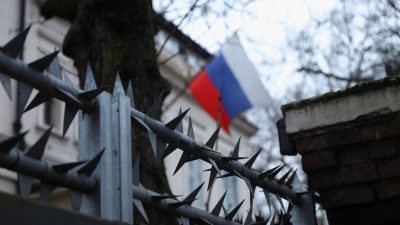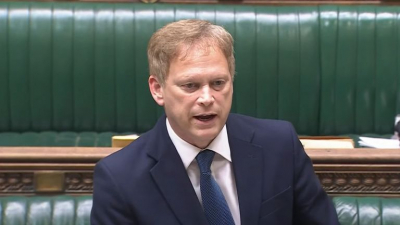Marie Louise, Duchess of Parma: A Regal Figure in European History
Early Life and Noble Origins:
Born on December 12, 1791, Marie Louise, Duchess of Parma, was a prominent figure in European royalty. She was the second wife of Napoleon Bonaparte and an archduchess of Austria by birth. Marie Louise, originally named Maria Ludovica Leopoldina Franziska Therese Josepha Lucia, was born into the imperial Habsburg family, a lineage synonymous with European nobility.
A Royal Union:
Marie Louise's life took a significant turn when, at the age of 18, she became the second wife of Napoleon Bonaparte, then Emperor of the French. Their union in 1810 was a strategic move, cementing diplomatic ties between the Austrian Empire and Napoleon's France. This marriage not only aligned powerful houses but also elevated Marie Louise to the grand stage of European politics.
Imperial Motherhood:
Marie Louise's role as a mother bore historical significance. She gave birth to a son, Napoleon Francis Joseph Charles, who became the heir apparent to both the French Empire and the Duchy of Parma. Her motherhood, however, was fraught with challenges as Napoleon faced military setbacks, eventually leading to his abdication and exile to the island of Elba.
Duchess of Parma:
Following Napoleon's defeat at Waterloo in 1815 and subsequent exile to the island of Saint Helena, Marie Louise's life took a new turn. The Congress of Vienna decided her fate, and she became the Duchess of Parma, Piacenza, and Guastalla. Her reign in Parma allowed her to exercise authority, contributing to the cultural and administrative development of the duchy.
Legacy and Later Life:
Marie Louise's legacy extends beyond her political marriages. After Napoleon's death in 1821, she remarried and played a pivotal role in the upbringing of her children. Her later life was marked by philanthropy, and she focused on cultural initiatives, leaving a lasting impact on the Duchy of Parma.
Death and Remembrance:
Marie Louise passed away on December 17, 1847, leaving behind a complex legacy intertwined with the turbulent era of Napoleonic Europe. Her contributions to the political landscape, her role as a mother, and her later endeavors in Parma are subjects of historical fascination, continuing to be explored and discussed by scholars and enthusiasts alike.
In Popular Culture:
Marie Louise's life has been the subject of various works of historical fiction, biographies, and scholarly research. Her complex relationships and the dramatic backdrop of the Napoleonic era have inspired storytellers to delve into the nuances of her character and the historical events she witnessed.
Marie Louise, Duchess of Parma, remains a compelling figure in European history, her life story woven into the intricate tapestry of political alliances, personal struggles, and cultural contributions during a pivotal era in the continent's history.
Marie Louise, Duchess of Parma, stands as a captivating figure in European history, her life intricately woven into the tapestry of political alliances, personal triumphs, and cultural contributions. From her noble beginnings in the Habsburg family to her strategic marriage with Napoleon Bonaparte, Marie Louise navigated the turbulent waters of Napoleonic Europe with grace and resilience.
Her role as a mother, giving birth to the heir apparent Napoleon Francis Joseph Charles, added a familial dimension to her historical significance. Following Napoleon's fall and exile, Marie Louise's transition to becoming the Duchess of Parma showcased her adaptability and leadership qualities. Her reign in Parma left an indelible mark on the cultural and administrative landscape of the duchy.
In her later years, Marie Louise's focus on philanthropy and cultural initiatives demonstrated a commitment to leaving a positive legacy. While her life was marked by complexities and challenges, she remains a subject of fascination for scholars and storytellers alike, inspiring works of historical fiction, biographies, and scholarly research.
Marie Louise, Duchess of Parma, thus concludes her historical narrative as a woman who navigated the corridors of power, motherhood, and cultural influence during a transformative period in European history. Her legacy endures as a testament to the enduring impact that individuals can have on the pages of history, shaping the course of nations and leaving an imprint that transcends time.
Marie Louise, Duchess of Parma, has been featured or referenced in various historical works, including books, films, and television series that explore the Napoleonic era. However, the specific mentions may vary, and her character is often a part of larger narratives focusing on Napoleon Bonaparte or the political landscape of the early 19th century.
Literature:
• Marie Louise is a character in historical novels that delve into the Napoleonic period, providing insights into her relationships, challenges, and contributions.
Film and Television:
• Various historical dramas, particularly those centered around Napoleon Bonaparte, may feature Marie Louise as a supporting character. Depictions of her marriage to Napoleon and her later life as the Duchess of Parma can be found in cinematic and televised adaptations.
Web Sources:
• Marie Louise is likely to be mentioned in historical databases, articles, and websites dedicated to the Napoleonic era, offering a comprehensive overview of her life and historical impact.
While her character may not be the primary focus in many instances, Marie Louise's presence in these mediums contributes to a broader understanding of the political and personal dynamics during a crucial period in European history.






